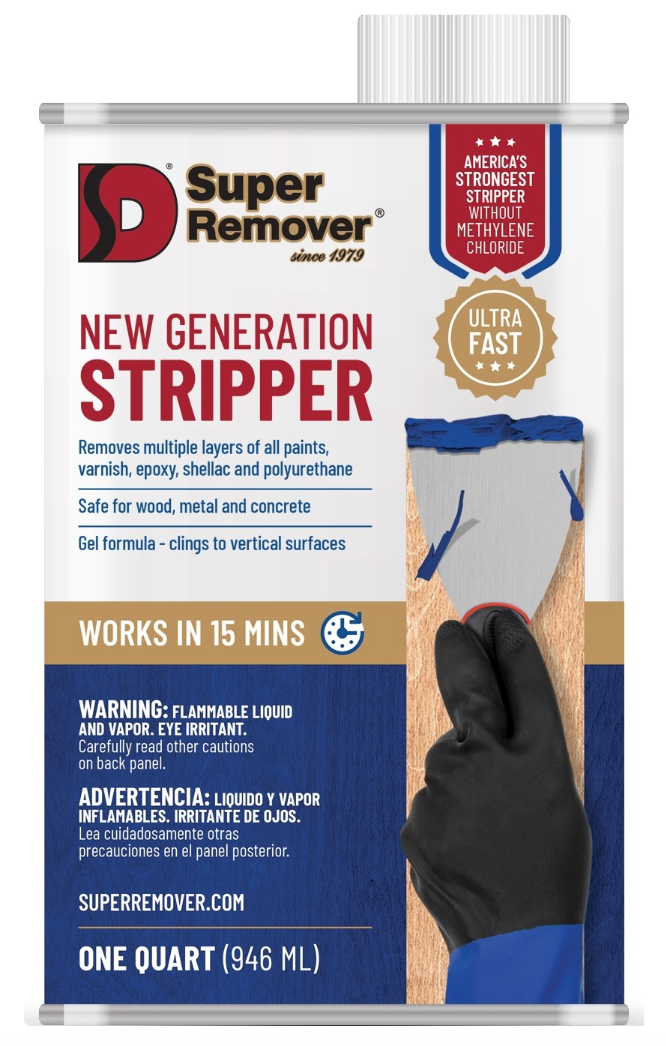There is a growing movement away from paint strippers that contain methylene chloride and N-methylpyrrolidone (NMP) because of serious health risks including developmental toxicity and even death. Safer Chemicals, Healthy Families’ Mind the Store campaign, together with the Natural Resources Defense Council (NRDC) and other coalition partners, have catalyzed this shift. We convinced 13 major retailers to phase out the sale of toxic paint strippers with these chemicals. On the regulatory front, EPA recently acted in a limited way to remove some methylene chloride-containing paint and coating removers from the marketplace. (Read our blog here on how EPA has left workers unprotected.)
With advocacy and regulations spurring a shift away from methylene chloride and NMP (though EPA has failed to act on NMP), consumers and contractors may be wondering what alternatives they can use. Some safer alternatives have been in use for years. Others, including products designed to be as effective as those with methylene chloride, were developed in response to the growing concern over toxic paint strippers.
To showcase the range of products available, Safer Chemicals, Healthy Families staff put together a list showing examples of paint strippers and graffiti, stain, and all-purpose removers that are safer than products with methylene chloride or NMP.* The list was compiled from our own research and also draws on research provided by staff from the Toxics Use Reduction Institute (TURI). This list can be useful for both consumers and professionals.
Download our new guide to alternatives here.
We were selective in creating this list in two ways:
1. We focused on providing examples of paint strippers and related products that are currently sold at retail online or will be available soon. Most of the products are sold by Walmart, Amazon, and/or The Home Depot, and some are also sold by Lowe’s. Our goal in providing these examples was to make the point that safer alternatives are readily available, rather than hypothetical.
2. To avoid falling into the trap of regrettable substitution, we intentionally excluded products that had ingredients as toxic as, or even more toxic than, methylene chloride or NMP.
- This meant disregarding products with one or more ingredients that were evaluated by Clean Production Action’s GreenScreen® Assessment and received a GreenScreen Benchmark™ score of Benchmark-1 (BM-1), defined as “Avoid – Chemical of High Concern.” Examples of BM-1 chemicals include methanol, naphthalene, toluene, and xylene. We also omitted products with one or more ingredients rated “LT-1” after being evaluated through the GreenScreen List Translator™. A score of “LT-1” means the chemical meets one or more criteria for the BM-1 score and is most likely to receive that score after a full GreenScreen assessment.
- It’s best to avoid paint strippers with either BM-1 or LT-1 ingredients. An illustrative list of products containing BM-1 ingredients is available here. To determine whether the ingredients in your paint stripper have received scores of BM-1 or LT-1, you can look them up by name or Chemical Abstract Service Registry Number (CASRN) in Healthy Building Network’s Chemical Hazard Data Commons or in this BizNGO report.
- For products with ingredients that received a score of LT-P1 after screening via the GreenScreen List Translator, we took a different approach. An LT-P1 designation means that after further research, the chemical might be designated BM-1, but it could also be BM-2 (Use but search for safer substitutes) or BM-3 (Use but still opportunity for improvement). We kept products with these ingredients in our list but flagged them with an asterisk for the sake of transparency.
If you strip paint as part of your job, or are planning for a weekend project, there are plenty of products to use that are safer than those with methylene chloride or NMP. Our list provides a starting point. In addition to alternative paint stripper products, non-chemical methods can also be used to remove paint, although these may carry other risks such as exposure to toxic chemicals in the paint being removed. A few of these methods are listed on our fact sheet here.
*Safer Chemicals, Healthy Families staff compiled this list solely for informational purposes, and does not endorse any of these products.




